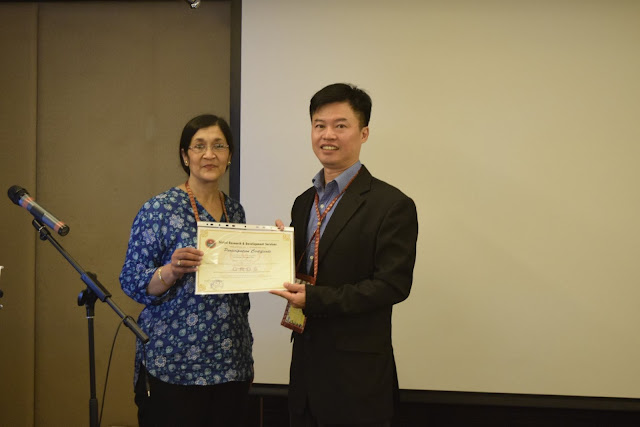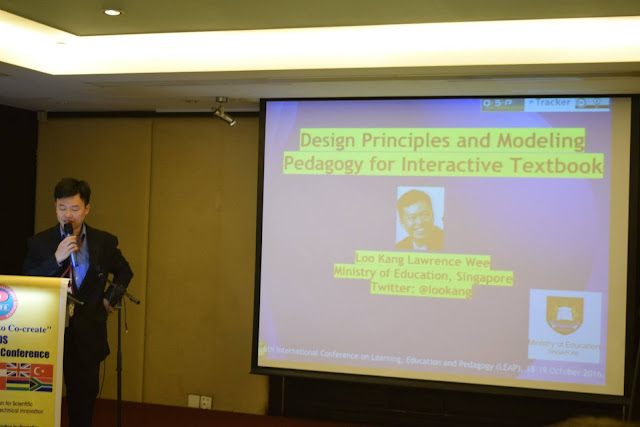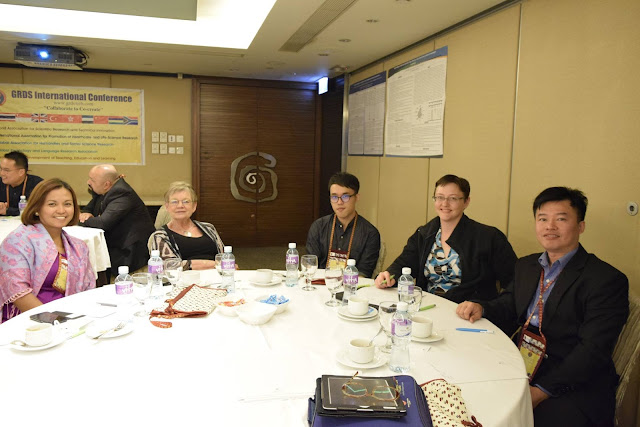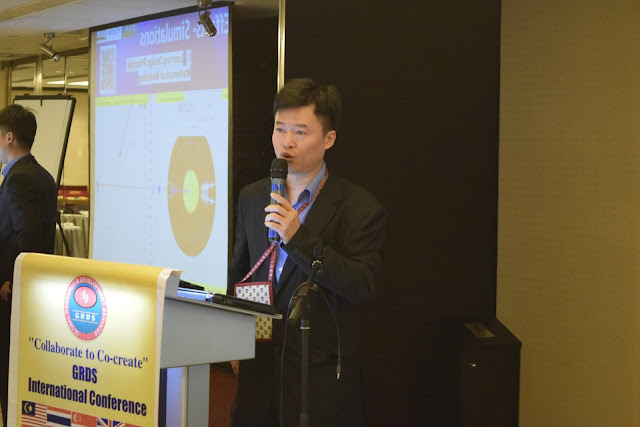6th International Conference on Learning, Education and Pedagogy (LEAP)
Briefing Document: Open Educational Resources and Interactive Physics Simulations in Singapore
1. Overview:
This document analyzes the content from the "Open Educational Resources / Open Source Physics @ Singapore" webpage, specifically referencing a presentation given at the 6th International Conference on Learning, Education and Pedagogy (LEAP) in Hong Kong (October 2016). The core theme is the development and implementation of interactive, open educational resources (OER) using Easy JavaScript/Java Simulations (EjsS/EJS) for physics education in Singapore. The project is spearheaded by Loo Kang Lawrence Wee of the Ministry of Education, Singapore.
2. Key Themes and Concepts:
- Open Educational Resources (OER): The project is deeply rooted in the philosophy of OER. The aim is to create freely accessible and reusable educational materials. This is evidenced by the reference to UNESCO's definition of OER: "http://www.unesco.org/new/en/communication-and-information/access-to-knowledge/open-educational-resources/what-are-open-educational-resources-oers/". The material is licensed under a Creative Commons Attribution-Share Alike 4.0 Singapore License, promoting sharing and adaptation.
- Interactive Learning: The central idea is that interactive simulations are superior to static, printed materials for learning. As stated in the abstract: "The theory underpinning this work is that learning by learner effort by modeling and thinking through dynamic and interactive simulation-models is more easily integrated than knowledge gained through static printed materials." This emphasis on active learning is a critical component.
- Easy JavaScript/Java Simulations (EjsS/EJS): The primary tool used to create the interactive resources is the EjsS/EJS modeling tool. This tool enables educators to develop customized simulations that students can manipulate and explore. The ease of use of the tool seems to be a focus. The site contains a huge library of these simulations, covering a broad range of physics topics.
- Electronic Book-Chapters (epub3): The approach involves combining interactive models, supporting text, and illustrations into coherent electronic book chapters. This format is accessible on computers and tablets. The aim is to move away from traditional textbooks towards more dynamic, digital learning resources. This aligns to the "logical next step towards more complete support for teachers and students".
- Singapore-Cambridge A-Level Customization: The resources are designed to align with the specific curriculum requirements of the Singapore-Cambridge General Certificate of Education Advanced Level (A-level) physics syllabus, making them highly relevant for the Singaporean context.
- Modeling Pedagogy: The project promotes "learning by learner effort by modeling". The simulation models are intended to be not just passive tools, but rather something that students actively engage with by interacting and modifying them to understand concepts. This supports a deeper understanding of the theory.
- Teacher Empowerment and Inspiration: A key goal of the project, as stated in the abstract, is to "inspire more educators to create interactive and open educational resources for the benefit of all." The intent is to empower educators to become creators of learning content.
- Accessibility: The materials are made available on multiple platforms, including web-based access and in formats such as iBook Store, Google Play Book, and Kindle Book.
3. Key Examples and Prototypes:
- E-book Prototypes: The presentation highlights prototypes for electronic chapters on Simple Harmonic Motion and Gravity. These prototypes are available at:
- https://sg.iwant2study.org/ospsg/index.php/interactive-resources/physics/02-newtonian-mechanics/08-gravity/154-e-book-shm
- https://sg.iwant2study.org/ospsg/index.php/interactive-resources/physics/02-newtonian-mechanics/09-oscillations/153-e-book-gravity
- Extensive Simulation Library: The site boasts an impressive collection of interactive simulations covering a variety of topics, including but not limited to:
- Kinematics
- Dynamics
- Energy
- Oscillations
- Electromagnetism
- Optics
- Quantum Mechanics
- Thermodynamics
- Math Concepts
- Specific Examples: The document lists numerous specific simulations, including: "Flight Dynamics Gimbal JavaScript HTML5 Applet Simulation Model," "Three States of Matter JavaScript HTML5 Applet Simulation Model," "Alternating Current AC Generator JavaScript HTML5 Applet Simulation Model," and many others. These examples show the breadth of the project. There is a clear integration with "Tracker" video analysis software, which can be integrated with simulations for real-world connections. The range of use covers even primary school concepts, such as "Primary Maths 3D view of Objects Cone, Pyramid, Cylinder, Sphere on Cuboid JavaScript Model Simulation Applet HTML5" as well as more complex concepts like "Hydrogen, Bromine, Hydrogen Bromide equilibrium JavaScript HTML5 Applet Simulation Model".
- Tools for Teachers: The site includes resources such as "Desmos Modeling Tool" that teachers can use for their teaching.
4. Supporting Evidence (Quotes):
- "learning by learner effort by modeling and thinking through dynamic and interactive simulation-models is more easily integrated than knowledge gained through static printed materials." - This highlights the core belief of the project.
- "I aim to inspire more educators to create interactive and open educational resources[1] for the benefit of all." - This underscores the goal of teacher empowerment and open access.
5. Organizational Structure:
- The project is associated with the Association for Development of Teaching, Education and Learning (ADTEL).
- The presentation was delivered at the LEAP conference in Hong Kong.
- The user "lookang" is a significant contributor to the site with numerous articles and hits.
6. Significance:
This initiative represents a significant effort to modernize physics education in Singapore by leveraging technology and open resources. By making these interactive models and resources freely available, the project seeks to transform how physics is taught and learned, promoting more active and inquiry-based pedagogical approaches. It also acts as a model for other regions aiming to enhance STEM education with digital tools and OER. There's a strong emphasis on not just content delivery, but on the development of modeling skills, which are essential for scientific understanding. The project actively fosters collaborations with educators from other institutions such as "Prof Douglas Brown and Wolfgang Christian NUS LT31", "Francisco Esquembre and Wolfgang Christian @NIE LT12" and "Fu-Kwun Hwang @River Valley High School" etc.
7. Further Points:
- Constant Updates: The presence of a "20240718-24 Web EJS beta Workshop" suggests this is an ongoing, evolving project.
- Recognition: The project and its contributors have received recognition, including a UNESCO King Hamad Bin Isa Al-Khalifa Prize for the Use of ICTs in Education, and multiple awards from the Ministry of Education in Singapore.
8. Conclusion:
The "Open Educational Resources / Open Source Physics @ Singapore" project is a highly ambitious and impactful initiative in physics education. It leverages interactive simulations and OER principles to create dynamic and accessible learning resources. The work done by Loo Kang Lawrence Wee and his team highlights a pathway for the future of science education in a digital age.

Conference Name: 6th International Conference on Learning, Education and Pedagogy (LEAP)Conference
Dates: October 18-19, 2016
Deadline: 15 August 2016
Conference Venue: Regal Oriental Hotel, 30-38 Sa Po Road, Kowloon City HongKong
Organizing Association: Association for Development of Teaching, Education and Learning (ADTEL)
Professional ConferenceOrganizer: Global Research & Development Services
Name of Person Attending: Loo Kang Lawrence Wee
Affiliation: Ministry of Education, SingaporeParticipation
Category: Oral Presenter
http://adtelweb.org/6th-international-conference-on-learning-education-and-pedagogy-leap-18-19-october-2016-hong-kong-about-2
Abstract
This paper documents the design principles derived and modeling pedagogy implemented) of creating electronic book-chapters (epub3 format) for computers and tablets using Easy Java/JavaScript Simulations (formerly EJS, new EjsS) and Modeling Tool. The theory underpinning this work is that learning by learner effort by modeling and thinking through dynamic and interactive simulation-models is more easily integrated than knowledge gained through static printed materials.
I started by combining related computer models with supporting texts and illustrations into a coherent chapter. From there, a logical next step towards more complete support for teachers and students is developing prototypes for electronic chapters on the topics of Simple Harmonic Motion and Gravity. This also is customized for the Singapore-Cambridge General Certificate of Education Advanced Level (A-level). I aim to inspire more educators to create interactive and open educational resources[1] for the benefit of all.
Prototypes:
- https://sg.iwant2study.org/ospsg/index.php/interactive-resources/physics/02-newtonian-mechanics/08-gravity/154-e-book-shm
- https://sg.iwant2study.org/ospsg/index.php/interactive-resources/physics/02-newtonian-mechanics/09-oscillations/153-e-book-gravity
Also available on Apple iBook Store, Google Play Book and Kindle Book.
http://www.unesco.org/new/en/communication-and-information/access-to-knowledge/open-educational-resources/what-are-open-educational-resources-oers/
 |
| photo by Flora of GRDS: Global Research & Development Services |
 |
| photo by Flora of GRDS: Global Research & Development Services |
 |
| photo by Flora of GRDS: Global Research & Development Services |
 |
| photo by Flora of GRDS: Global Research & Development Services |
 |
| photo by Flora of GRDS: Global Research & Development Services |
 |
| photo by Flora of GRDS: Global Research & Development Services |
 |
| photo by Flora of GRDS: Global Research & Development Services |
 |
| photo by Flora of GRDS: Global Research & Development Services |
 |
| photo by Flora of GRDS: Global Research & Development Services |
 |
| photo by Flora of GRDS: Global Research & Development Services |
FAQ
- What are Open Educational Resources (OER) and how does this project utilize them?
- Open Educational Resources (OER) are teaching, learning, and research materials that are freely available for anyone to use, adapt, and share. This project utilizes OER by creating interactive electronic book chapters (in epub3 format) using Easy JavaScript Simulations (EjsS), which are available online and via app stores. The project aims to make learning more dynamic and engaging by providing learners with access to interactive models and simulations rather than static text. This supports the philosophy of learning through active engagement with simulations.
- What is the primary goal of using interactive simulations in education?
- The main goal is to enhance learning by allowing students to actively model and interact with dynamic systems. The belief is that learning through hands-on experience with interactive simulations leads to deeper understanding and better knowledge integration compared to learning from traditional, static materials. Students can experiment with variables and see the immediate effects, facilitating a more intuitive grasp of complex concepts.
- What specific educational areas are addressed by these interactive resources?
- The project focuses on physics concepts, particularly Simple Harmonic Motion and Gravity, and is tailored for the Singapore-Cambridge General Certificate of Education Advanced Level (A-level). However, the resources cover a wide range of topics, including mathematics, geometry (3D shapes), mechanics, oscillations, electromagnetism, quantum physics, and even primary school math concepts, suggesting a versatility of application across different curricula. There are also simulations of chemistry.
- What technologies are used to create these resources?
- The primary technology used is Easy JavaScript Simulations (EjsS), formerly known as Easy Java Simulations (EJS). This tool allows educators to create interactive models and simulations that can be run on computers and tablets. The resources are often coded in JavaScript/HTML5 for broad compatibility and deployed as ePub3 files. The simulations can also use WebGL, as in the case of 3D models. Also, data fitting tools can also be used.
- Where can educators and students access these interactive resources?
- The resources are available on the project website, which is located at sg.iwant2study.org/ospsg, and also published as ebooks on platforms like Apple iBook Store, Google Play Book, and Kindle Book, making them widely accessible. The site also lists many individual models by subject. Additionally, links to the interactive resources are embedded in the e-book prototypes, allowing users to quickly interact with the simulations in the context of the chapter.
- What kind of simulations are available besides physics?
- Beyond physics, the collection includes simulations for mathematics (e.g., 3D geometry), primary school number concepts, and also covers areas such as chemistry and other scientific fields. There is also data fitting and statistics models. A wide variety of simulations are available in areas including mechanics, electromagnetism, quantum physics and even primary school math concepts, suggesting a versatility of application across different curricula.
- What kind of design principles and pedagogy are employed when creating these resources?
- The design principles are centered around the idea of combining computer models, texts, and illustrations into coherent learning experiences. The pedagogy emphasizes "learning by learner effort" through modeling, which is intended to promote active engagement and deeper understanding. Instead of passively reading static content, students actively experiment with dynamic systems, promoting a more intuitive understanding of underlying concepts.
- Who is the key individual behind this project and what is their affiliation?
- Loo Kang Lawrence Wee from the Ministry of Education, Singapore, is the key individual behind this project. He is an oral presenter at the 6th International Conference on Learning, Education and Pedagogy (LEAP), and his abstract outlines the design principles and modeling pedagogy used in this project. His work aims to inspire educators to create more interactive, open educational resources.
